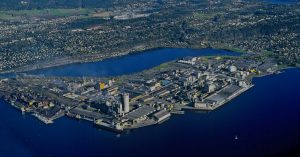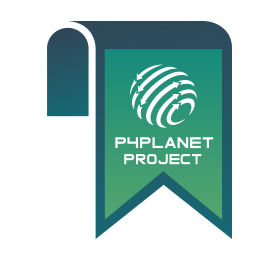Interview with Christian Brekken, Herøya Industripark (HIP)
We spoke with Christian Brekken from Herøya Industripark AS – one of the founding members of the Hubs4Circularity Community of Practice.
Can you tell us about Herøya Industripark (HIP)? What is your role at HIP?
Herøya Industripark is Norway’s leading industry park, hosting companies producing large volumes of fertilizers, manganese alloys, and PVCs, as well as many other chemicals and products.
Herøya Forskningspark, the research center, is an integral part of Herøya Industripark and offers one of the country’s most attractive research environments.
The industry park has key infrastructure such as cooling water, port structure, and an electrical power network with a very high degree of renewable energy. The park is home to more than 80 companies with around 2500 employees.
I am a physicist by training, and work as Project Manager & Business Developer at HIP. This entails following up R&D projects HIP is involved in, and providing support to existing and new companies that consider establishing at Herøya e.g. with a pilot process installation.
The industrial park is characterized by various material and energy exchanges, using synergies from industrial (urban) symbiosis and circular economy collaborations. Could you explain to us how these collaborations are established?
Most commonly, the industry partners meet bilaterally or in a group consisting of factory managers and discuss their ideas directly together. To give an example of symbiosis, Yara’s fertilizer factory at Herøya, one of Norway’s largest sources of CO2 emissions outside the oil and gas industry, releases 800,000 tonnes of CO2 each year. Yara captures some of the CO2 from their production plant and transports it in a relatively impurified state via flowline to a station for purification and liquification. Here, another company, Nippon Gases, steps in and sells the purified liquid CO2 to the food and beverage market.
Based on needs communicated to us by different companies, new collaborations are developed. An example is the SIRBET project initiative. The project idea is to find sustainable ways of recirculating concrete from building constructions. At HIP, we have several buildings where demolishing is the only option to get the most out of our land area. This project is a good opportunity to use our old buildings in the development of new technology towards more circular concrete. With favourable contacts within the park, surrounding companies, and also the municipality, several partners across the whole value chain have shown interest. The project partners are now looking for suitable funding opportunities both locally and in the EU.
HIP offers 4 main products: Land/Area, Buildings, Offices, and FoU/Pilot support. Parts of the basic infrastructure is owned by HIP. We are assisting and guiding the different companies on the island when establishing new collaborations, and during their operations.
What would you say are the main challenges for establishing a collaboration?
The keyword is ‘business case’ for all involved companies – it is a must. This is usually the major challenge for a collaboration. The companies generally prefer to do business by interacting directly with other partners, if possible, as opposed to having to involve public funding (this is less practical since the process is slower). These days, we also know that the requirements regarding climate neutrality are very strict and are getting stricter.
Where do ideas for new collaborations come from?
All employees across all businesses at Herøya contribute with ideas. In addition, the companies have their own business development units. Those responsible for business development are hired specifically to see opportunities and new ways to make business, and nowadays especially in combination with reduction in GHG emissions. They identify possible partners from the industrial park directly, as they know of ongoing activities and processes in the park and can identify potential options for exchanges and collaborations – such as the availability of an unused feedstock being waste from another process.
What has motivated you to join the Hubs for Circularity Community of Practice?
I am looking for a way to look up practical examples of physical exchanges between industry players, i.e., concrete cases of industrial symbioses, with concrete technologies used in other industrial parks. Those practical examples really are of interest to us. We have around 80 companies in our park. A starting point for establishing more industrial (urban) symbiosis and circular economy collaborations is to start mapping the waste streams. The more you know about the processes, the more likely you are to see potential options for industrial symbioses.

Source of photo above: Åsmund Tynning / Herøya Industripark AS.
Photo of Christian Brekken: Tom Riis / Herøya Industripark AS.


